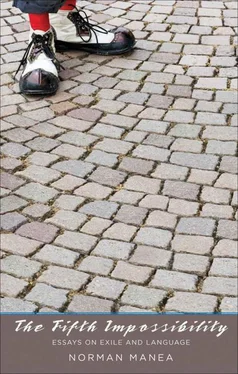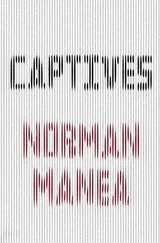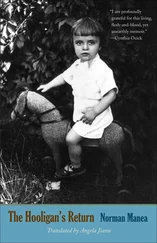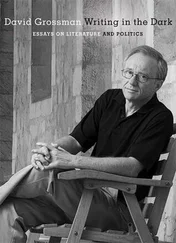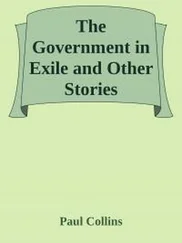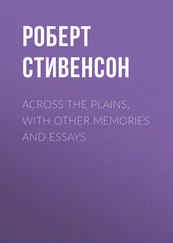1. Mircea Eliade, Journal I, 1945–1955 trans. Mac Linscott Ricketts (University of Chicago Press). Journal II, 1957–1969 trans. Fred H. Johnson Jr. (University of Chicago Press). Journal III, 1970–1978 trans. Teresa Lavender Fagan (University of Chicago Press). Journal IV, 1979–1985 trans. Mac Linscott Ricketts (University of Chicago Press). Autobiography Vol. 1, 1907–1937: Journey East, Journey West trans. Mac Linscott Ricketts (University of Chicago Press). Autobiography Vol. 2, 1937–1960: Exile’s Odyssey trans. Mac Linscott Ricketts (University of Chicago Press).
In 1970, Emil Cioran, the iconoclastic philosopher who had left Romania three decades before and won postwar fame in Paris, wrote in a letter to a friend from his youth about his nostalgia for the illusions of those who stayed behind. “I never cease to wonder that after so many trials you have managed to keep such evident composure. Nor is yours a unique case. I can guess the secret of so much vitality. Without hell, no illusions.”
After so many years in the West, and despite the glory he achieved, Cioran felt old and worn out. “We pay dearly for not having suffered. We believe in nothing,” confessed the nihilist in his Parisian refuge, where he had fled in the wake of the great European and world upheaval. Before, in Bucharest, he had contemptuously savaged the corrupt Romanian interwar democracy and — like his friends, the philosopher Constantin Noica and the writer Mircea Eliade — had ardently supported right-wing extremism.
Writing to his former friend in Romania, Cioran also referred to the sacrilege he had once committed against the French poet Paul Valéry, an unjust text in bitter opposition to his early admiration for Valéry, who had dominated the spiritual aspirations of his youth. Curiously, however, his blasphemy, he says, “was quite well received in Paris, where people like to demolish all reputations, even legitimate, even justified. Especially those.”
He seemed unhappy at the lack of scandal, at the lack of people taking offense. No one had called him a vampire from Dracula’s land, an alien, unworthy Wallachian who had tarnished the splendors of French culture with his barbarous, parvenu frustrations. On the contrary, Parisians adopted his paradoxes with delight and considered him a great stylist of the French language. Had he written an irreverent article in Romania, about, say, the national poet Mihai Eminescu, the outrage would have been instantly felt; he would have been treated as a rootless cosmopolite, an immoral, atheistic renegade. And the scandal would very soon have focused not only on the abject person of the blasphemer but also on the conspiracy of which he was a part, the classic, timeless, pagan, Masonic, foreign conspiracy aimed at undermining the values of a universally misunderstood and abused nation. The fact that he came from a family of Romanian Orthodox priests, or that he had once written that he would commit suicide if he were a Jew, would naturally have been cited as the usual cover for betrayal.
There is, we have to admit, something touching about the canonization of representative cultural figures. And in a world that is constantly losing its ideals, this may even pass for a sign of spirituality. But piety and taboos are structurally alien to culture, which, as we know, is essentially creative and questioning; on the other hand, even from a theological perspective, the quasi-religious canonization of certain nonreligious figures is an act of impiety, a vulgar substitution, itself almost a blasphemy, which expresses people’s need for myth, illusion, and subterfuge.
Without hell, no illusions indeed; all the more so if society is passing through a severe crisis of identity and structure. This is what is happening in countries that belatedly face modernity, with all its tensions, promises, and failures. The Islamic world, large parts of the ex-communist world, but also many other tumultuous regions of our unbalanced planet are in this unenviable position.
The Viruses of Critical Thinking
Amid the explosive uproar of frustrations, even literary debates may become the pretext for violent appeals for a common unity and, of course, for excluding those carrying the viruses of critical thinking and individualism.
Take, for example, the reactions produced by the Russian writer Andrei Sinyavsky’s attempt to clean Pushkin’s hallowed literary monument of the disfiguring dross that had accrued to it from Slavophile orthodoxy and Soviet propaganda.
The mythologizing of Pushkin seems to have begun immediately after his fatal duel with D’Anthès in 1837. At the poet’s funeral, admirers fought to carry off sacred strands of hair from his whiskers and head. But the official canonization took place at the unveiling of the great Pushkin’s statue in Moscow in 1880, and half a century later, in 1937, it was ratified at the Soviet festivities marking the centenary of the poet’s death. In 1880, Dostoyevsky, gratified by an impressive grouping of 100 women surrounding the huge wreath that he had to hang around the statue’s neck, had proclaimed Pushkin a prophetic emblem of Russia, to the accompaniment of the shouts and tears of the crowd. Pushkin, Dostoyevsky said, would show “the way out of European ennui.” He represented “the universally human and unifying Russian soul.” He “uttered the ultimate word of great, universal harmony, of ultimate brotherly accord between all tribes according to the laws of Christ’s gospel!” 1
In 1937, an editorial in Pravda announced that “Pushkin is completely ours, Soviet, for the Soviet power inherited everything that is best in our people …. In the final analysis, Pushkin’s creation merged with the October socialist Revolution as a river flows into the ocean.” 2
Compared with this ideological-political appropriation of the national poet, the spectacle of admirers overcome with grief at his funeral, or the marketing of numerous products with the name Pushkin (cigarettes, shoes, chocolate, vases) on the centenary of his birth in 1899, appears as no more than a naïve, homely carnival.
For a genuine dissident like Sinyavsky, courageous exposure of Soviet hypocrisy and terror (for which he suffered years of prison and then exile) needed to be supplemented with a critical examination of the “national emblems” that still provided the iconography for the idealization of Russian identity. The “Pushkin myth” has proved over more than 150 years to have had an enormous potential for mystification and manipulation, and to nullify this is the ultimate aim of Sinyavsky’s Strolls with Pushkin.
A huge hagiographic literature had depicted the national poet of Russia, and then of the Soviet Union, as a martyr, a man of the people, and a social model, ignoring his distinctive and truly great characteristics as an artist and human being. In the introduction to Sinyavsky’s book, the Russian scholar and translator Catherine T. Nepomnyashchy writes,
Pushkin had been sacralized, forged into the center of a secular cult which none the less drew its emotional force from the wellsprings of religious zeal. Around the figure of Pushkin an entire cosmology was cultivated, a black and white universe divided clearly between heroes and villains who were defined ethically by their relations with Pushkin and served to validate him politically through their own allegiances. 3
It is easy to understand why not only a dissident, but also a great admirer of Pushkin such as Andrei Sinyavsky, could not accept the canonical legend of the poet’s life, or the metamorphosis of his work into a national ode. “What we might term ‘Pushkin for the mass reader,’ ” Nepomnyashchy writes,
Читать дальше
